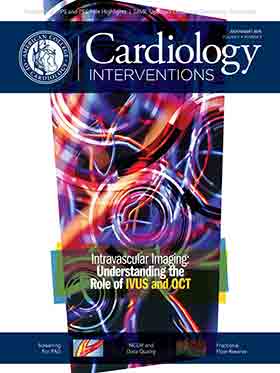Peripheral Matters | USPSTF Statements on Nontraditional CVD Risk Factors, PAD Screening
Two recent statements from the U.S. Preventive Services Task Force (USPSTF) say there is insufficient evidence to make recommendations regarding the use of certain nontraditional risk factors to assess the risk of cardiovascular disease and the use of ankle-brachial index (ABI) to screen for peripheral artery disease (PAD) in asymptomatic patients to prevent cardiovascular disease.
In the statement on risk assessment for cardiovascular disease with nontraditional risk factors,1 the USPSTF states, “the current evidence is insufficient to assess the balance of benefits and harms of adding the ABI, hsCRP level, or CAC [coronary artery calcium) score to traditional risk assessment for [cardiovascular disease] in asymptomatic adults to prevent [cardiovascular disease] events. (I statement).”
An accompanying evidence report2 by Jennifer S. Lin, MD, MCR, et al., examined 43 studies with 267,244 patients and found “insufficient adequately powered clinical trials evaluating the incremental effect of the ABI, hsCRP level, or CAC score in risk assessment and initiation of preventative therapy.”
“Policy-level recommendations about strategies for assessment of [cardiovascular disease] risk are challenging because of somewhat limited data and variable risks between and within populations,” note John T. Wilkins, MD, MS, and Donald M. Lloyd-Jones, MD, ScM, FACC, in an editorial comment. “Clearly, identification of the right patients for the right therapy requires identification of the right patients for the right risk-assessment tests.”
Tamar S. Polonsky, MD, MSCI, and Philip Greenland, MD, FACC, argue in a separate editorial comment that in their opinion, “there is more than sufficient evidence to support selective use of CAC testing as a tool to inform risk assessment and support the less tangible aspects of clinical decision-making.”
In the statement on screening for PAD and cardiovascular disease risk assessment with ABI,3 the USPSTF concludes, “the current evidence is insufficient to assess the balance of benefits and harms of screening for PAD and [cardiovascular disease] risk with the ABI in asymptomatic adults. (I statement).”
Janelle M. Guirguis-Blake, MD, et al., looked at five studies with 5,864 participants in an accompanying evidence report, and examined the benefits and harms of screening and treatment of screen-detected PAD.4 The authors found “no direct evidence and limited indirect evidence on the benefits of PAD screening with the ABI in unselected or asymptomatic patients.”
Moving forward, “Further research is needed to identify therapies that improve functional performance and prevent cardiovascular events in asymptomatic people with an ABI less than 0.90, which could provide sufficient evidence to support ABI screening in asymptomatic people,” explain Mary M. McDermott, MD, and Michael H. Criqui, MD, MPH, in an editorial comment. “Until then, a careful history to identify ischemic leg symptoms in older people is likely to significantly improve PAD detection and treatment.”
References
- US Preventive Services Task Force, Curry SJ, Krist AH, Owens DK, et al. JAMA 2018;320:272-80.
- Lin JS, Evans CV, Johnson E, et al. JAMA 2018;320:281-97.
- US Preventive Services Task Force, Curry SJ, Krist AH, Owens DK, et al. JAMA 2018;320:177-83.
- Guirguis-Blake JM, Evans CV, Redmond N, et al. JAMA 2018;320:184-96.
Clinical Topics: Vascular Medicine, Atherosclerotic Disease (CAD/PAD)
Keywords: ACC Publications, Cardiology Interventions, Peripheral Arterial Disease, Calcium, Coronary Vessels, Advisory Committees
< Back to Listings

